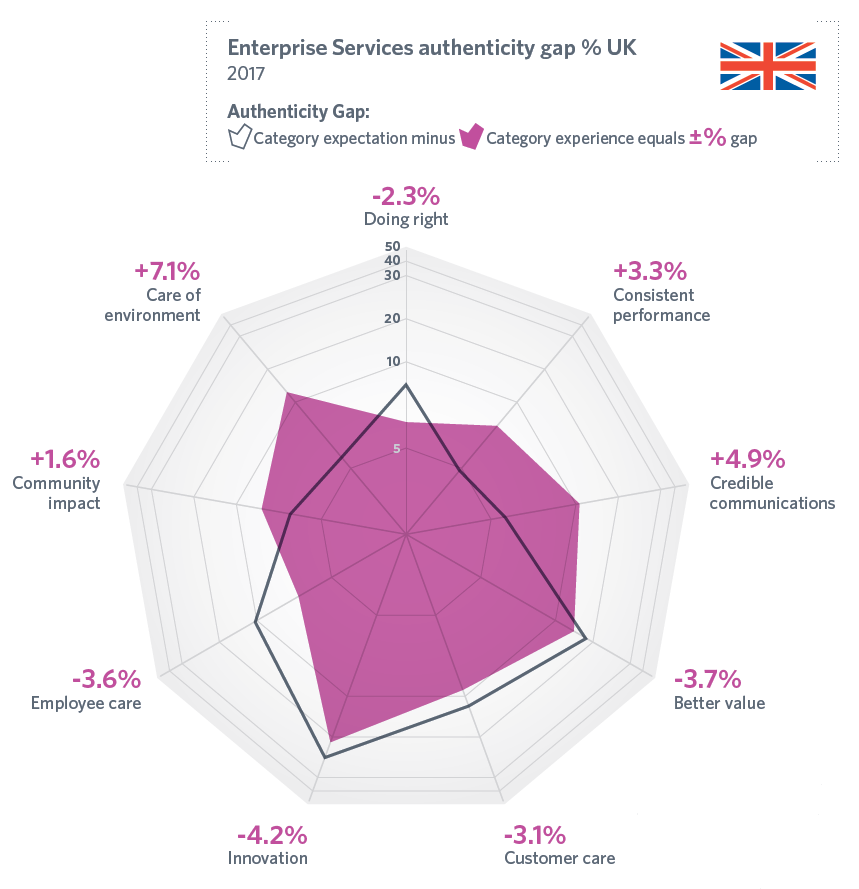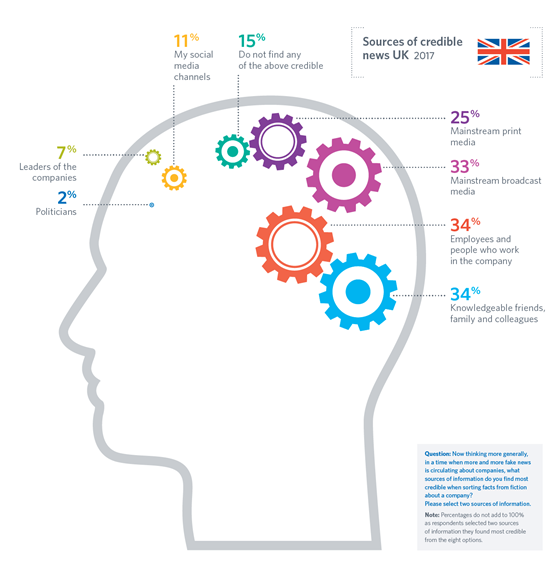A detailed new multi-industry survey has highlighted for the first time the often critical differences between customer expectation and experience in the enterprise services industry, with many companies failing to deliver the value that customers crave. It has also flagged up the critically low standing that the voice of many CEO’s have for customers.
FleishmanHillard’s Fishburn’s (FHF) Authenticity Gap survey crunched the numbers on communication and experience data to produce findings that might make stark reading for many CEOs within the enterprise services sector.
>See also: Enterprise I.T. budgets shifting toward hosting and cloud services
“We’ve seen politicians and companies scramble to claim the mantle of authenticity as voters and customers seem to care less about what leaders do and more about their perceived character and intentions,” said FHF’s CEO Jim Donaldson.
The aim of the study is simple: clearly identify the biggest gaps between what companies say and how they behave with the shared perceptions of others. The pressure to bring brand and reputation together is driving the evolution of a new model, where the intersection of brand and reputation offers executives a new, single view of their organisation.
The Authenticity Gap is a methodology to help companies understand and proactively manage the gap between audiences’ expectations and actual experiences with a company or industry. The insights allow organisations to create true relationships with their audiences – authentic engagement that drives progress and opportunity.
Insights into the enterprise services sector
The enterprise services sector has had mixed success in meeting customer expectations. The industry is falling short of expectations in providing customer care, employee care, ‘doing right’, providing better value and innovating.
This could be worrying for the industry, as the expectation to innovate, provide better value and take care of both customers and employees are the highest for this sector.
>See also: Scaling for web: enterprise web-scale IT
With competition and choice constantly increasing in this business space, addressing this shortfall will become more and more integral to successful corporate leadership.
However, it is not all concerning news for the enterprise services sector. It has shown to be meeting expectations in community impact and performs beyond expectation in care of the environment, consistency of performance and credible communications.
What causes the authenticity gap?
There are a multitude of causes behind the space between reality and perception. One of the most crucial thrown up by the authenticity gap survey is the issue of fake news and fact.
The survey asked people how in a time of more and more fake news circulating about companies, what sources of information people find most credible when sorting facts from fiction about a company:
>See also: The continuous enterprise in a fast paced world
The results will be worrying reading for CEOs and make a compelling case for the communications industry to change the way it media trains CEOs as well as empowering far larger numbers of staff to speak on behalf of the company.
Just 7% of respondents found leaders of companies the most credible sources of information. Only politicians came in lower. For 34% the most credible source of information are knowledgeable friends, family and colleagues, a figure tied with employees and people who work for the company.









